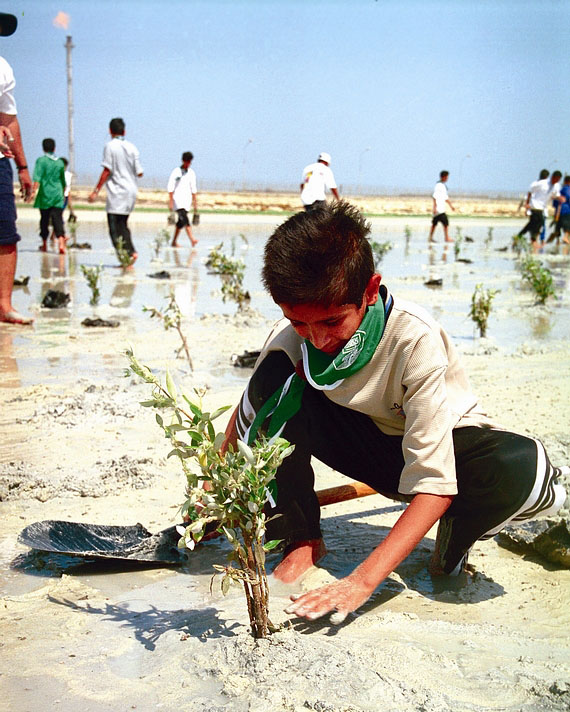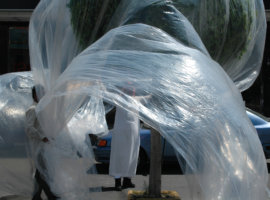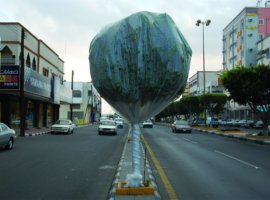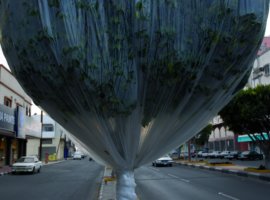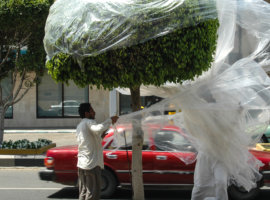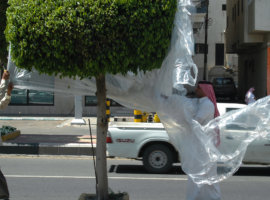Details
Nature has its own way of stabilizing its elements in order to reach a state of equilibrium. This is what we refer to as an ecosystem: a system which contains numerous components that keep it in balance.
Intelligent life forms in our ecosystem have found methods of introducing new species into an already harmonized order. This is first and foremost for the benefit of homo sapiens, and the rest of the species only consequentially.
This approach, whether good or bad, is always based on:
- Human selfishness: when a decision is made by an individual, excluding the opinions of others.
- Beautification.
- Amassing wealth: as the importing and transporting of foreign trees is more costly than using local varieties.
- Creating a distraction: turning forestation into an international relations campaign under the slogan of environmentalism. In some cases, this approach is used to improve a country's global image and gain political leeway.
The Tamarix sp - native to the Middle East and Africa - was introduced to several states in the USA. This was for the purpose of stabilizing the soil and preventing corrosion, seeing how this tree has long tap roots that allow them to intercept deep water tables. (See figure 1)
Saudi Arabia introduced the Conocarpus Erectus tree - native to Australia - for the purpose of landscaping and increasing oxygen levels in the ecosystem. Furthermore, this tree tolerates saline water, but was the kingdom successful in this endeavor? (see figure 2)
The planting of urban trees increases oxygen levels, and contributes to adjusting the local climate. However, what we need to keep in mind is that nature has its own way of achieving equilibrium, and intelligent lifeforms are the product of nature itself. Hence, the introduction of new elements is never beneficial. It may yield some desirable results, but always backfires in the end and disturbs the balance.
The agricultural commission of Arizona found that the Tamarix sp did in fact prevent corrosion, but that in the interim it interfered with the natural aquatic systems and eliminated the cottonwood and willow trees in Arizona. In Saudi Arabia, Conocarpus Erectus stayed green all year round and increased levels of oxygen in the atmosphere, but simultaneously killed all the surrounding native plants. Its horizontally spreading roots also destroyed all the water and phone lines. These trees created an ecological threat to the environmental balance. The department of housing at King Fahad University of Petroleum and Minerals issued a statement of non-responsibility for the planting of Conocarpus Erectus within the university campus due to the vast damage it causes.
The influx of local complaints about the Conocarpus - which proved it to be a public menace - is what moved the artist to embark on this social adventure. At that time, environmental issues were not prioritized by the oil rich government. Gharem performed Flora and Fauna under many challenging circumstances. He exists in a region that forbids civilian freedom of expression. The channels through which complaints may be raised against government agencies do not exist. Even questioning the qualifications of the officials who selected this tree is forbidden. All of these factors compelled the artist to execute this performance art piece on the main road in his city. In a public space, in full view of his fellow citizens, he enveloped himself along with the tree in transparent plastic sheets and stood in the sun for six hours over the span of several days. The locals were transformed from observers into participants in the discourse, unanimously agreeing that the aesthetic appeal of greenery in urban areas adds enormous cultural value and decreases the levels of depression and stress, on condition that the chosen tree is indigenous to the area, which connects it to the memory and spirituality of the people and place.
In the year 2020, after a thirteen year wait, Saudi Arabia finally placed a ban on the planting of this tree.
Process

